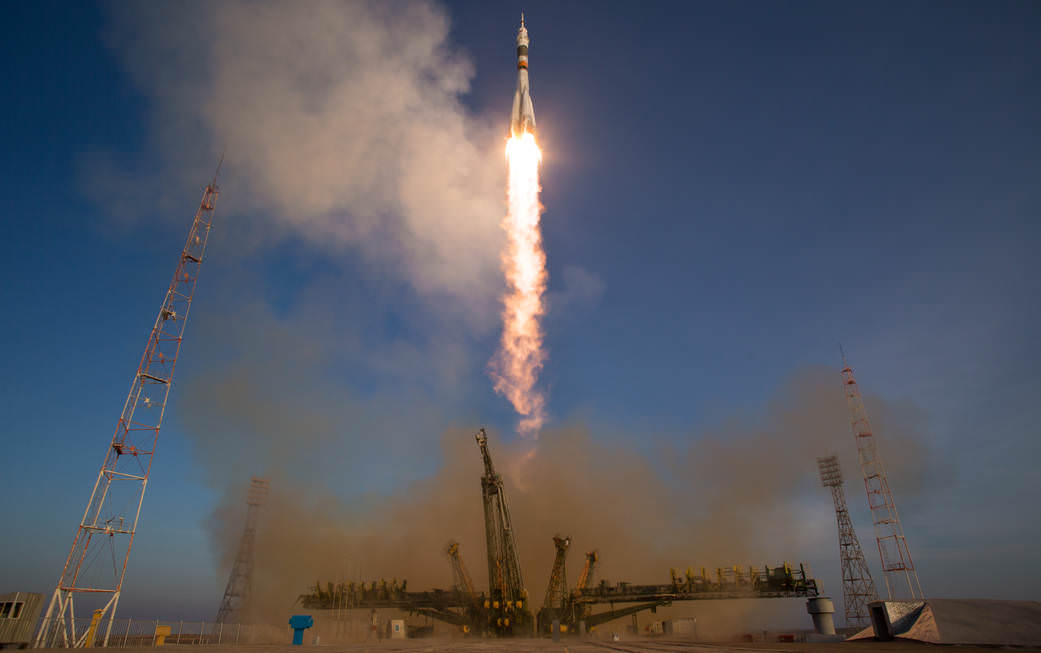
The first British astronaut to blast off on a journey to the International Space Station (ISS) soared gloriously skyward early today, Dec 15, following the flawless launch of a Russian Soyuz capsule with his Russian/American crewmates from the Baikonur Cosmodrome in Kazakhstan.
The picture perfect liftoff of the Soyuz TMA-19M rocket into clear blue skies with Expedition 46 Soyuz Commander and six time space flyer Yuri Malenchenko of the Russian Federal Space Agency (Roscosmos), Flight Engineer Tim Kopra of NASA, and Flight Engineer Tim Peake of ESA (European Space Agency), occurred at 6:03 a.m. EST (5:03 p.m. Baikonur time, 1103 GMT) on Tuesday, Dec. 15, 2015.
The Soyuz crew executed a series of delta velocity burns after a thunderous liftoff to adjust the orbit to intersect with the space station after launching from the same pad used by Yuri Gagarin, the first human to launch into space back in 1961.
The launch culminated with a very rapid 4-orbit 6-hour fast track arrival at the massive Earth orbiting complex.
However, the crews successful docking only took place after a slight delay when an unexplained glitch occurred in the final moments.
The very experienced Soyuz commander Yuri Malenchenko took over manual control of the crafts approach after a technical issue with the automated Kurs docking system aborted the vehicles approach at about 20 meters distance.
The crews are trained extensively for both automated and manual docking operations.
Soyuz contact and docking capture at the ISS was confirmed at 12:33 p.m. EST, about 10 minutes later than originally planned, while flying about 222 statute miles over India.
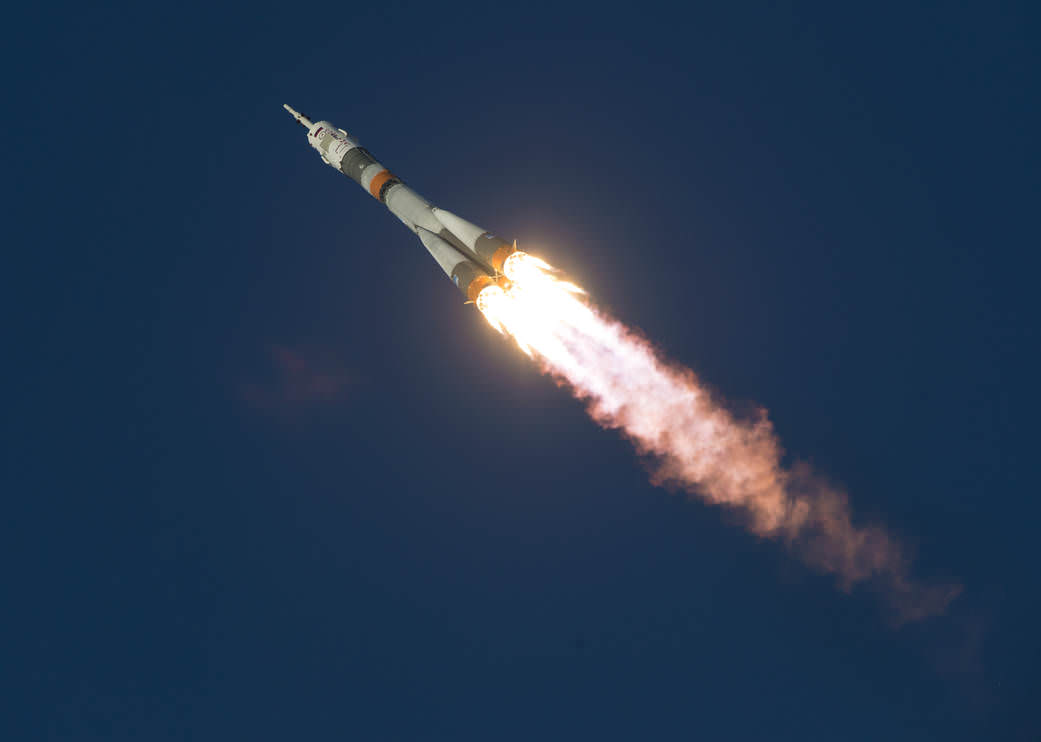
The hooks and latches were then activated and closed to complete the spacecrafts hard mating to the station.
“We have finally arrived at the station,” announced a gleeful Malenchenko.
The Soyuz capsule and crew will remain at the space station for some six months until May 2016.
Today’s arrival restores the station to its full complement of six people altogether for Expedition 46.
The new astronaut trio joins three crewmembers already aboard, including Station Commander Scott Kelly of NASA and Mikhail Kornienko and Sergey Volkov of Roscosmos.
Kelly and Kornienko comprise the first ever ‘1 Year ISS crew.’
Malenchenko is now starting his sixth space flight. Notably he will eventually become one of only three cosmonauts to exceed 800 days in space – along with Russian cosmonauts Sergei Krikalev and Gennady Padalka.
This is the second flight for NASA’s Tim Kopra, who spent two months on the station back in 2009 during his first space flight.
Tim Peake is the first UK astronaut to reach the station and the 221st person to live on the ISS.
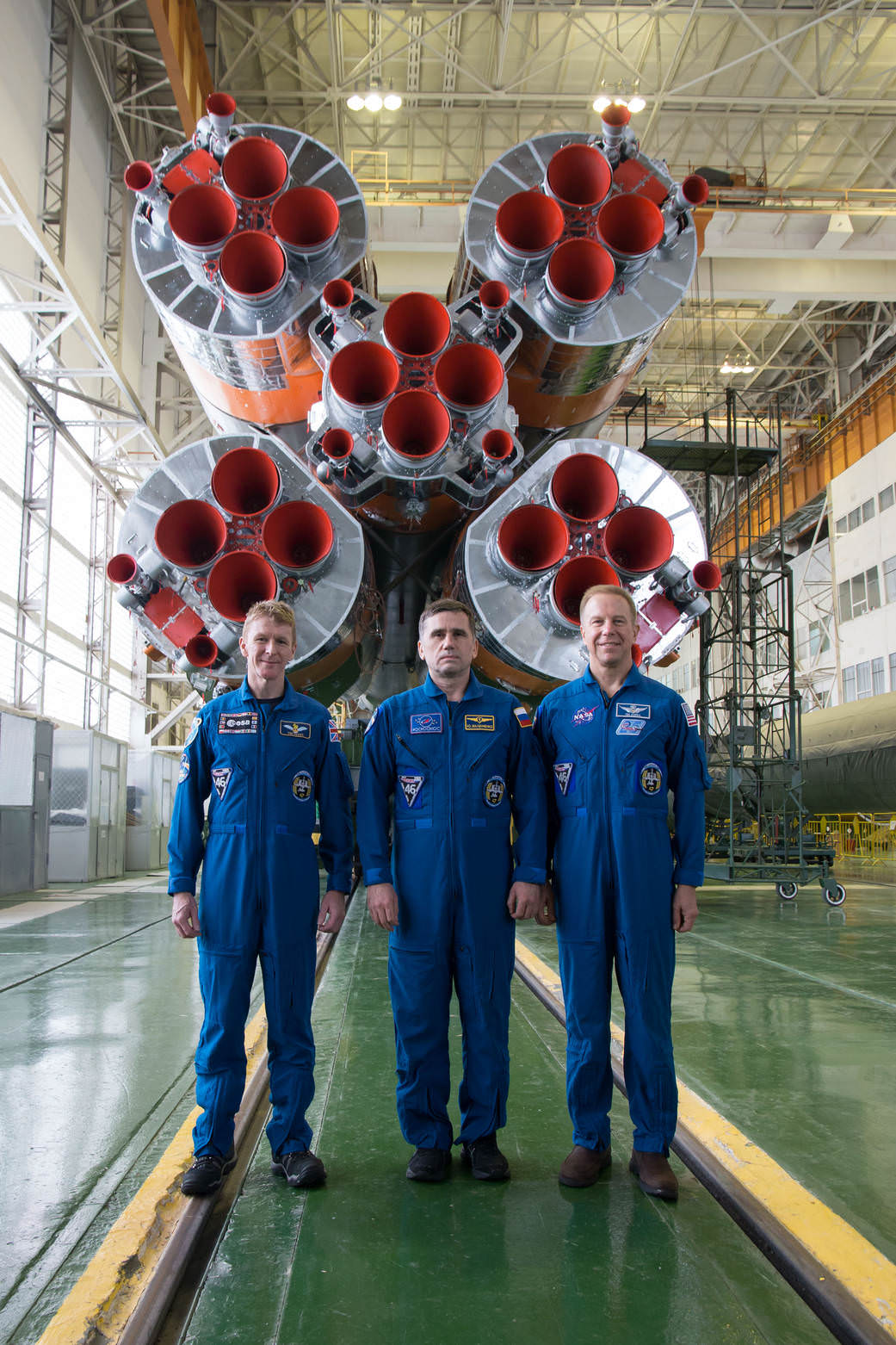
The three person Expedition 46 crew will spend approximately six months living and working aboard the orbiting outpost. They will return to Earth in June 2016.
In the final minutes of approach to the space station, the Soyuz slowed precipitously to a velocity of about 0.1 meters per second as it closed in to within less than 100 meters distance from the docking port at the Russian Rassvet module.
The crosshairs were perfectly aligned during approach and docking as the Soyuz approached to within about 20 meters, when the Soyuz Kurs automatic docking system suddenly took control to abort the docking.
The vehicle backed off to a distance of about 100 to 120 meters while Russian mission controllers carefully evaluated the situation.
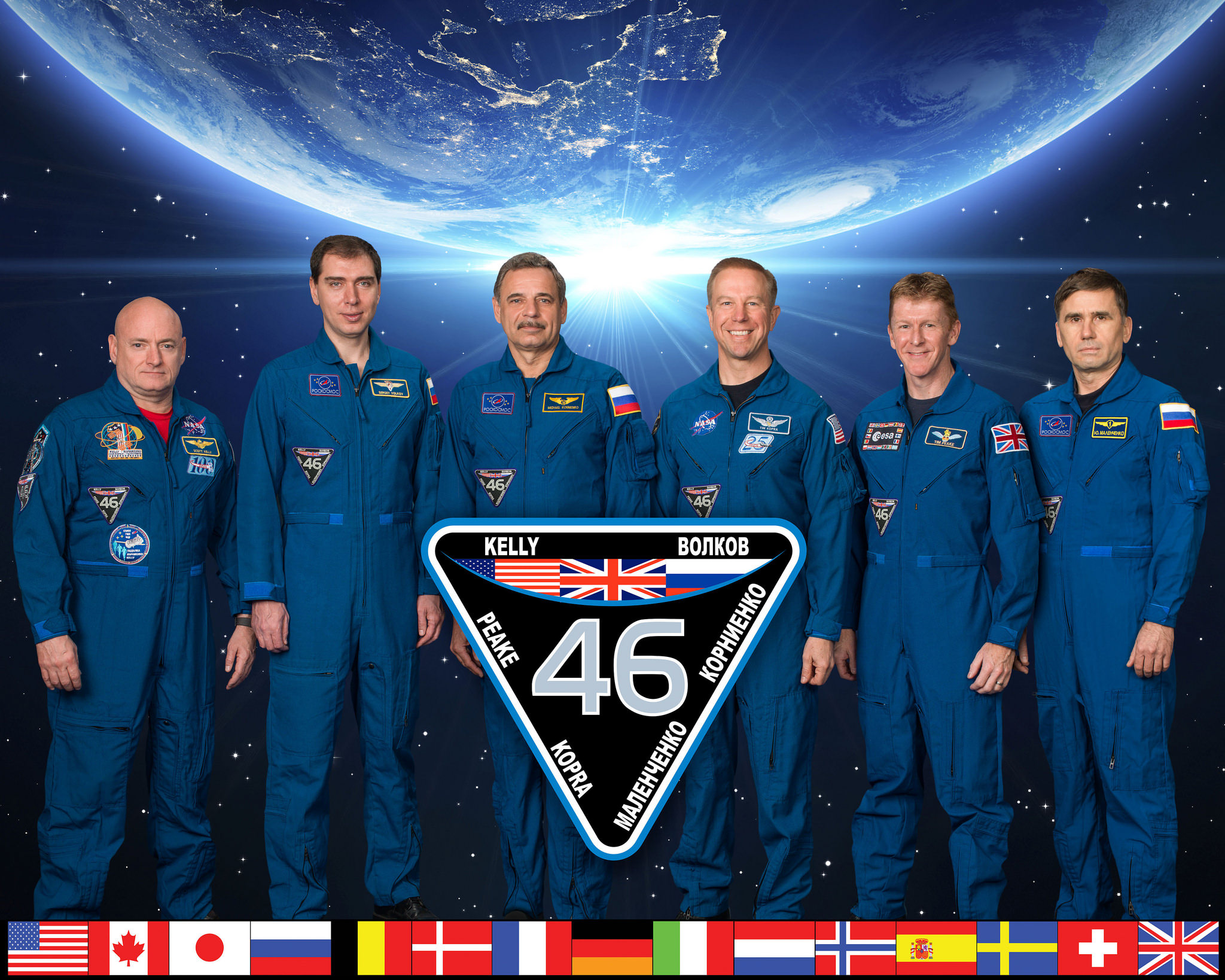
The Rassvet docking port was only recently vacated 4 days ago by the Dec. 11 departure of the Expedition 45 crew members Kjell Lindgren of NASA, Oleg Kononenko of the Russian Federal Space Agency and Kimiya Yui of the Japan Aerospace Exploration Agency (JAXA) safely concluded their nearly 5 month mission aboard the massive orbiting lab complex with a soft landing on the frozen steppes of Kazakhstan at approximately 8:12 a.m. EST (7:12 p.m. Kazakhstan time) – as I detailed here.
The Soyuz launch and ISS docking operations were all carried live on NASA TV.
“It was a beautiful launch and we are glad to have the crew arrive at the ISS,” said NASA’s ISS program manager Kurt Shireman.
“This launch shows the strength of the ISS partnership in space.”
“This is a very busy time of vehicles coming and going at the ISS. And we have spacewalks upcoming.”
Today’s manned launch also follows closely on the heels of the unmanned Dec. 6 launch and subsequent Dec. 9 arrival of the Orbital ATK Cygnus CRS-4 commercial resupply ship loaded with over 7000 pounds of science experiments, food and gear.
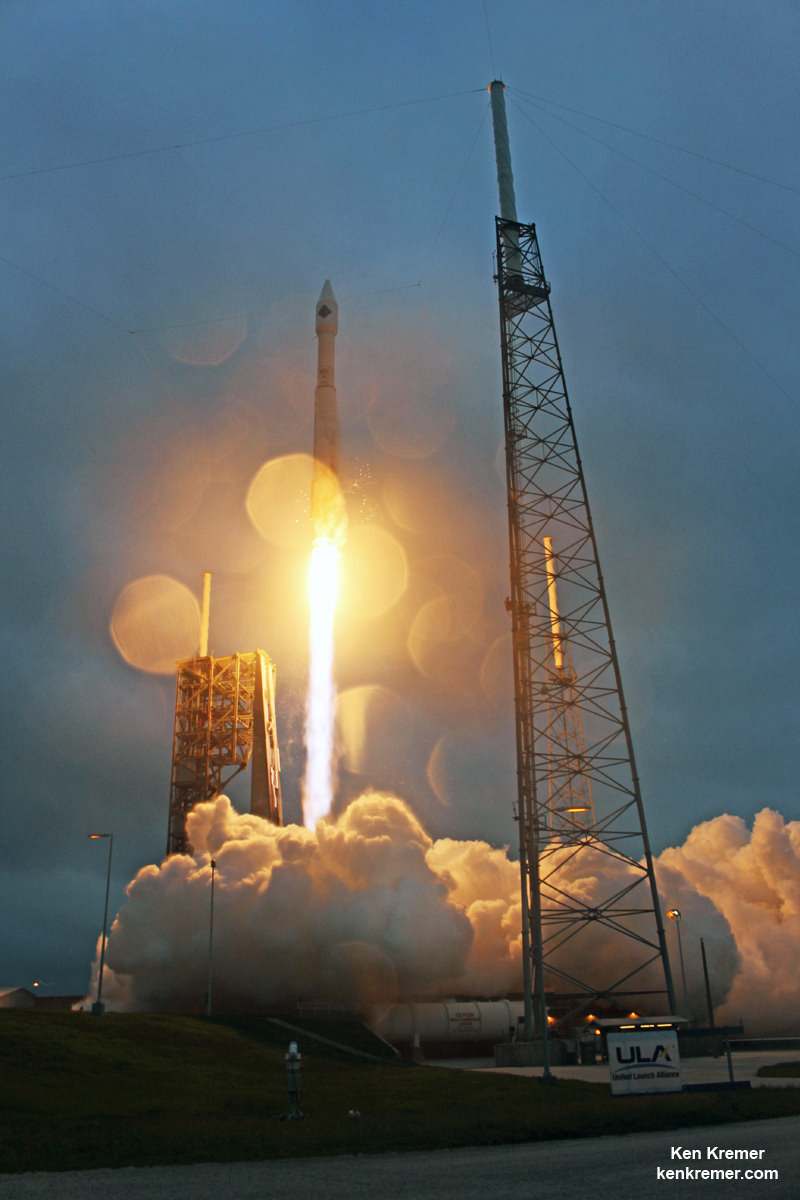
Cygnus was carried to orbit by a United Launch Alliance Atlas V rocket from Cape Canaveral, Florida.
“A lot of research is getting done on the space station, probably the most ever,” said William Gerstenmaier, Associate Director for NASA Human spaceflight at NASA Headquarters.
“It’s great to get three more crewmembers on orbit and continue the first 1 Year ISS mission.”
“This will all help us with the Journey to Mars!”
The Expedition 46 crew members will conduct more than 250 science investigation in fields including biology, Earth science, human research, physical sciences and technology development using the research equipment brought up a variety of unmanned cargo ships including the Orbital ATK Cygnus, SpaceX cargo Dragon, Japanese HTV and Russian Progress vehicles.
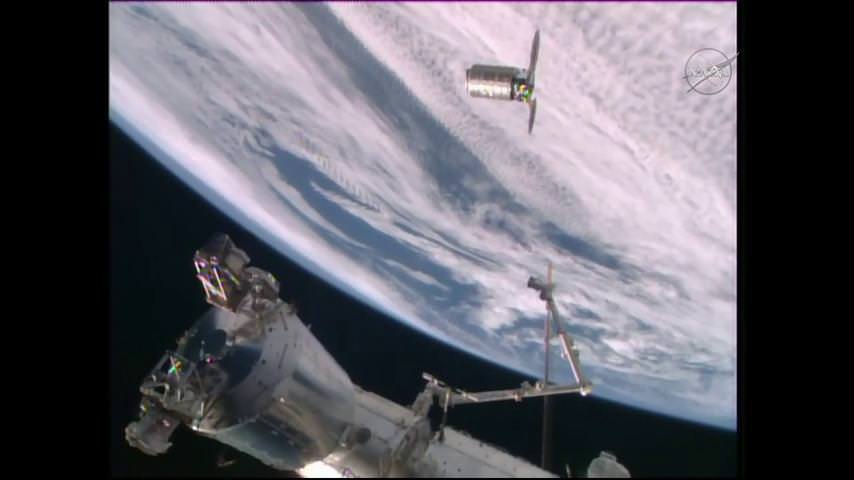
The entire combined crew will be busy unloading the Cygnus supplies and Christmas gifts for the upcoming holiday season.
Stay tuned here for Ken’s continuing Earth and planetary science and human spaceflight news.
